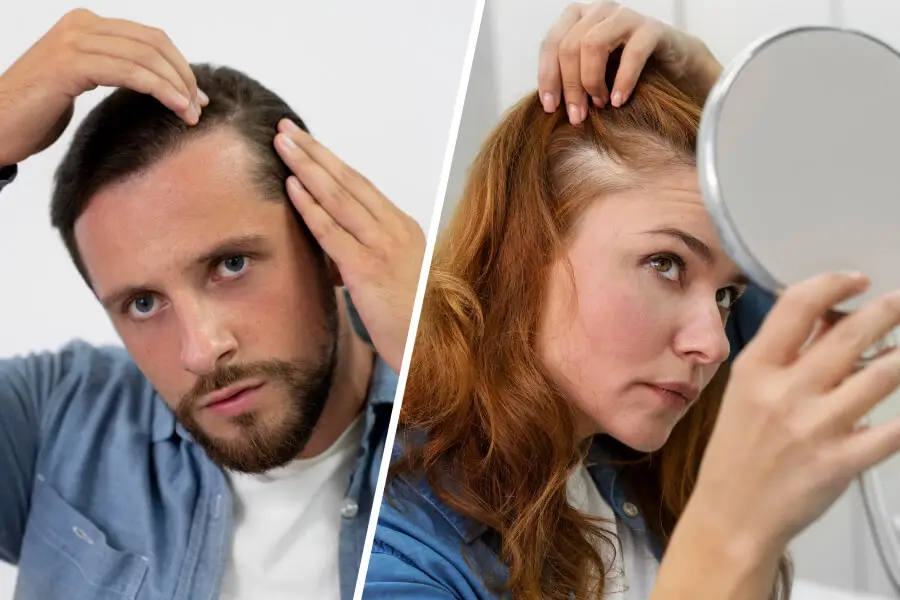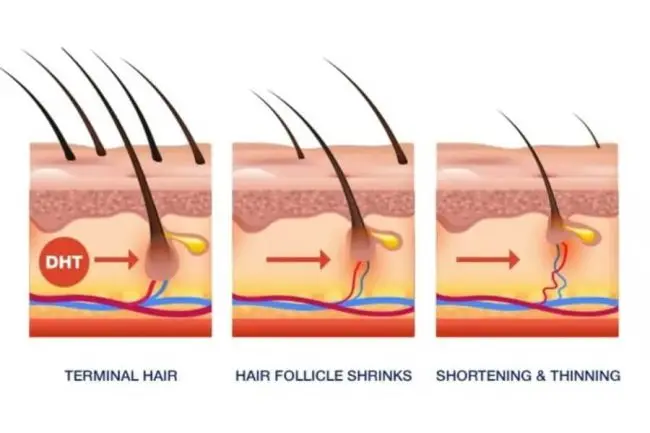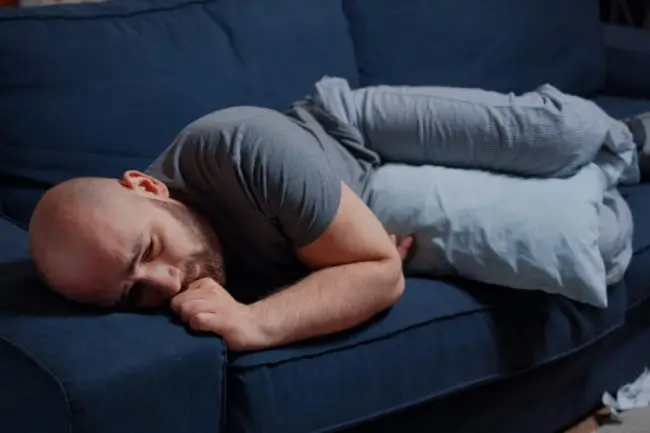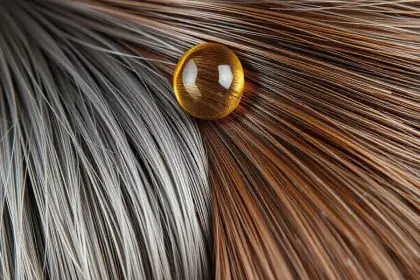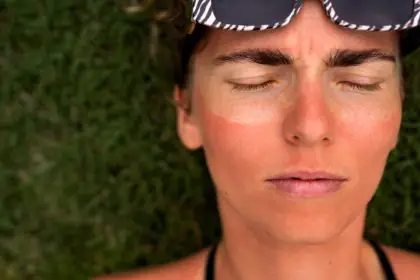DHT and Hair loss are a common concern affecting both men and women, but it manifests differently due to various factors, including genetics and hormones.
One key hormone, dihydrotestosterone (DHT), plays a significant role in hair loss patterns. Understanding how DHT affects hair health can help in managing and treating this condition.
Male vs. Female Hair Loss Patterns
Men and women experience hair loss differently. In men, the condition is often called male pattern baldness or androgenetic alopecia (around 50 million men and 20 millions women) According to “Health Line“, characterized by a receding hairline and thinning at the crown. In contrast, women typically experience a diffuse thinning over the top of the scalp, known as female pattern hair loss.
Differences in Hair Growth Cycles: Hair growth occurs in cycles, including growth (anagen), rest (telogen), and shedding (catagen) phases. DHT can shorten the anagen phase and prolong the telogen phase, leading to fewer hair strands and thinning hair. This impact differs between genders, influencing the pattern and extent of hair loss.
Exploring Dihydrotestosterone (DHT)
What is DHT and How Does it Impact Hair Health?
DHT (Dihydrotestosterone) is a hormone derived from testosterone through the action of the enzyme 5-alpha reductase. It is more potent than testosterone and plays a crucial role in the development of male characteristics. However, it also affects hair follicles, shrinking them and making it harder for hair to grow.
Role of DHT in Male Pattern Baldness: In men, high levels of DHT can bind to receptors in hair follicles, particularly on the scalp. This binding leads to follicular miniaturization, where hair becomes finer and shorter until growth ceases.
Role of DHT in Female Pattern Baldness: Women produce DHT in smaller amounts, but hormonal imbalances, especially during menopause, can increase its levels. This can result in a thinning hairline and overall hair density reduction, although complete baldness is rare.
Gender Disparities in DHT and Hair Loss
Understanding the Genetic and Hormonal Influences: Genetics play a critical role in how susceptible individuals are to DHT-induced hair loss. Family history is a strong predictor, particularly for men. Hormonal changes, such as those occurring during pregnancy, menopause, or due to hormonal disorders, also influence DHT levels and loss of hair patterns.
Impact of DHT on Menopause-Related Hair Loss: During menopause, women experience a drop in estrogen, which usually counteracts DHT. With lower estrogen levels, DHT can have a more pronounced effect on hair follicles, contributing to hair thinning.
Treatment Approaches
Medications and Therapies for Men:
- Finasteride: A medication that inhibits 5-alpha reductase, reducing DHT levels.
- Minoxidil: An over-the-counter topical treatment that can help stimulate hair growth.
- Hair Transplants: Surgical options are available for advanced cases.
Medications and Therapies for Women:
- Minoxidil: The primary FDA-approved treatment for female pattern loss of hai.
- Spironolactone: An oral medication that can help by reducing androgen levels.
- Hormone Therapy: In some cases, hormone replacement therapy can be beneficial, especially for those experiencing menopausal symptoms.
Lifestyle Factors for Hair Loss
Effects of Stress, Diet, and Exercise on Hair Health: Chronic stress, poor diet, and lack of exercise can exacerbate loss of hair. Stress can trigger telogen effluvium, a condition where hair enters the shedding phase prematurely. A balanced diet rich in vitamins and minerals supports overall hair health, while regular exercise helps maintain hormonal balance.
Managing Hair Loss Through a Healthy Lifestyle:
- Nutritional Support: Ensure a diet high in proteins, vitamins (especially B vitamins and vitamin D), and minerals like iron and zinc.
- Stress Management: Techniques such as meditation, yoga, and adequate sleep can help manage stress levels.
- Regular Exercise: Promotes circulation and helps maintain a healthy hormonal balance.
Innovative Solutions for DHT-related Hair Loss
Emerging Technologies and Treatments:
- Platelet-Rich Plasma (PRP) Therapy: Involves injecting a concentration of a patient’s platelets to stimulate hair growth.
- Low-Level Laser Therapy (LLLT): Uses light energy to stimulate hair follicles and encourage growth.
- Stem Cell Therapy: An experimental approach aiming to regenerate hair follicles.
Natural Remedies and Supplements for Hair Regrowth:
- Saw Palmetto: Believed to reduce DHT levels and is available in supplement form.
- Pumpkin Seed Oil: Has shown promise in studies for reducing hair loss.
- Biotin and Niacin: B vitamins that support hair health.
Consultation and Support for Hair Loss
Seeking Professional Help for Effective Solutions: Consulting with a dermatologist or a trichologist can provide personalized treatment options and professional advice. Early intervention is key to managing loss of hair effectively.
Community Resources and Support Groups: Support groups and online communities can offer emotional support and practical advice for those experiencing hair loss, providing a space to share experiences and strategies.
Conclusion
Understanding the role of DHT in hair loss is crucial for both men and women. While the impacts can differ between genders, the underlying mechanisms are similar. With various treatment options and lifestyle modifications, managing DHT-induced hair loss is possible.
Contacting a dermatologist and exploring both medical and natural remedies can offer paths to preserving and re-growing hair.
FAQs
Do men have more DHT than women?
Yes, men generally produce more DHT than women due to higher levels of testosterone, from which DHT is derived.
Do women lose hair because of DHT?
Yes, women can experience loss of their hair due to DHT, especially during hormonal changes such as menopause, though the pattern and extent differ from men.
Is DHT responsible for hair loss in men?
DHT is a major factor in male pattern baldness, causing hair follicles to shrink and eventually stop producing hair.
Is hair loss worse for men or women?
Hair loss severity can vary, but men often experience more pronounced baldness, while women typically experience diffuse thinning. The psychological impact of hair loss can be significant for both genders.

